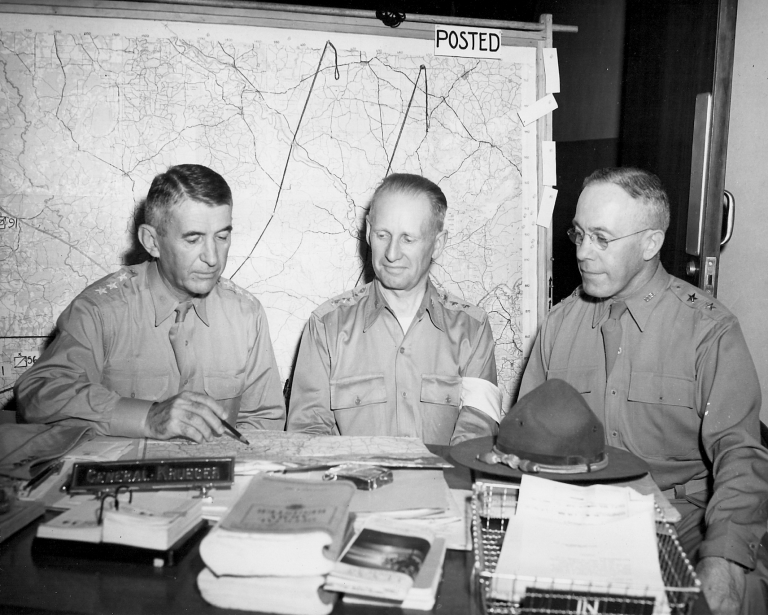Van Craddock's Gregg County Tales
'Flamboyant' described Longview mayor G.A. Bodenheim
“Let Bodie do it.”
It was a phrase common to Longview residents for decades. It meant if something needed doing, then all you had to do was get Gabriel Augustus Bodenheim involved.
Bodenheim was a doer. His trademark was a red carnation in his lapel and a gold-headed cane in his hand. He served as mayor of Longview for two decades (1904-1920) and was certainly one of the most flamboyant public figures the city has ever seen.
He headed the city during some of its most progressive, and most difficult, times, including a 1919 race riot. When Bodie died on Aug. 12, 1957, only a day short of his 84th birthday, few men were as honored in death as was G. A. Bodenheim.
Bodenheim was born in Vicksburg, Miss., in 1873, where he started his business career at the age of twelve in a cottonseed mill where he worked to support his mother, four brothers, and a sister.
He eventually moved to Shreveport, La., to work as a cotton buyer. He relocated to Gregg County in 1898, and it wasn’t long before Bodenheim became one of the biggest cotton brokers in Texas.
In 1901 Bodenheim married Willie Bass. He ran successfully for mayor.
Bodie had grand plans for the city. Before he was through, he was responsible for:
–Major expansion of the Longview corporate limits for the first time in the city’s history.
–The city’s first paid fire department with purchase of modern fire-fighting equipment.
–Passage of a $250,000 waterworks system and filtration plant.
–Installation of a modern sewer system.
–The city’s first sanitation collection and disposal system.
–A health department complete with health officer and building inspector.
–Installation of a modern “Corinthian Standard” street lighting system.
–Paving of almost ten miles of city streets.
It was the annexation of Longview Junction in 1904 that allowed Longview to expand its tax base. State law required a city to have at least 5,000 residents before it could sell improvement bonds.
At the time, Longview covered a very small area, reaching barely five blocks from the immediate downtown area to the Junction.
So Bodenheim set to work convincing Longview residents to annex the Junction, a wild-and-woolly railroad center located east of the corporate limits that would satisfy the state requirements.
Annexation would mean city taxation for Junction property owners, who were opposed to the idea.
But Bodenheim, as usual, had a plan. He looked up the state law and discovered that a person could become a property owner simply by rendering for taxation any personal property he might own, such as a watch, a cow or household goods.
Bodie called on friends and business acquaintances to render their watches and other items so they would become eligible voters in the Longview Junction. With Bodenheim spearheading the effort, he convinced a large number of his friends to render personal property. Enough votes were corralled to carry the annexation of Longview Junction. Longview’s tax base jumped from $709,000 to $4 million.
In the next few years, Longview progressed as few small East Texas cities ever had. An 800-seat opera house was built, comparable to anything in Dallas and Fort Worth, along with a new high school building, two brick hotels, several brick churches, concrete sidewalks, and a public park maintained at the city’s expense.
Mayor Bodenheim rarely drew an opponent when he ran for re-election.
There was an effort in 1916 to run Bodenheim for U.S. Congress.
“We don’t know what Longview would do without Bodie,” said the Longview Times-Clarion. “Should he go to Congress there would be nobody with versatility enough to head the campaign for a good roads tax, a water bond tax or a street tax … Nor would there be anybody to make opening speeches of ginger and fire when the county fair starts.”
Van Craddock, a 1970 SFA graduate, has written a column for the Longview News-Journal since 1978. He has published two collections of his News-Journal columns, most recently a book titled “East Texas Tales: A Celebration of Pineywoods People, Places, Facts and Fables.” The U.S. Army Vietnam veteran serves on the Gregg County Historical Commission. Van and wife Bettye (a former SFA Pine Log editor) live in Longview.


